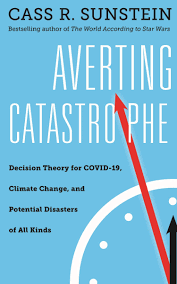The Small Big by Martin, Goldstein & Cialdini was published last year and is highly recommended for anyone who wants insights into how behavioural science insights can be applied to practical problems of behaviour change. The book follows on from Cialdini’s classic work Influence (read more details here) and another work Yes! published by the same authors. Both The Small Big and Yes! are packed full of examples of using small ‘nudges’ or changes in context, design and wording to create big impacts in human behaviour. Reading through these books, along with Influence itself, you are bound to find many great examples of behaviour change that you can immediately apply in your own work.
I picked ten examples which serve to illustrate the range of those you can read in the books. I’ve grouped them into five themes based on TapestryWorks own SNAPP framework for evaluating behavioural touch points (watch out for our SNAPP cards coming soon!).
SIMPLE
The first example is a great reality check for marketers who believe (as we all do) that offering more choice is always better. Barry Schwartz showed in The Paradox of Choice that not only does too much choice confuse but it also often leads to decision paralysis (and lower satisfaction). Procter & Gamble found that they had 26 versions of Head & Shoulders shampoo. When they reduced this number to 15 (which still seems large to me) they experienced a 10% increase in total sales.
The second example shows a similar pattern with the participation rates in retirement planning. Sheena Iyengar and colleagues analysed the company-sponsored retirement programs of nearly 800,000 workers looking at the relationship between participation rate and the number of fund choices. Unsurprisingly, they found that the more more choices that were offered, the less likely employees were to participate in the program, with every additional ten funds added to the program reducing the participation rate by 2%. For example, the participation rate with two funds was 75%, dropping to 60% with 59 funds offered. If these numbers were replicated across the population they would represent a huge impact on the pension planning of millions of people.
NORMATIVE
The third example shows the power of reciprocity. A restaurant changed the usual practice of having a basket of mints near the exit, by leaving a mint for each diner with the bill. This simple act led to a small increase in tips (3.3%), which while not huge is definitely better than nothing. In another experiment they decided to leave two mints instead of one, and found that tips then increased by over 14% (for just two penny’s worth of sweets). Other experiments have looked at more subtle influences on behaviour such as gently touching the diner, but we will leave that for another article.
The opposite is also true in the fourth example, where norms of bad behaviour influence our own (think of the NY Police experiment in zero tolerance). A study found that the likelihood for someone to pick up an envelope (containing money) hanging out of a mailbox doubled when there was litter surrounding the mailbox. This shows that when norms are broken in one area, they can change behaviours (for the worse) in other areas too.
AVAILABLE
The fifth example shows the power of scarcity (and social proof), even if on the face of it the example seems counter-intuitive. An infomercial writer (one of the most successful in the world) changed three words in a standard line and caused a huge increase in the number of people who called and purchased the product. The change was from “Operators are waiting, please call now” to “If operators are busy, please call again”. Although this might imply a frustrating time calling and recalling to get through, it also implies that many other people are doing the very same thing, along with an increased chance of “missing out” (an important heuristic in Singapore and beyond).
The sixth example shows the power of adjectives to boost mental availability. They tested different versions of an advertisement for Oxfam. The main text of the advert read, “Oxfam International is one of the most effective aid organisations in the world. Oxfam provides a broad range of humanitarian aid to people across the globe. If you were asked to donate to Oxfam, how much would you give?” They tested this as a baseline condition along with another two texts each with an additional sentence. In one, the words “One example of how Oxfam uses funds is by providing individuals with access to clean water”. In a third condition “clean water” was changed to “bottled water”. For the baseline text, average donations were $7.50, while those in the “clean water” condition donated 37% more and those in the “bottled water” condition face less than the baseline.
PERSONAL
The seventh example is one of the most famous marketing disasters of all time and perhaps the classic example of loss aversion. in 1985, Coca-Cola decided to replace their existing formulation with a sweeter tasting drink (in response to Pepsi’s preferred taste), testing the new formula with nearly 200,000 people in 25 cities to show a clear preference in taste for the new version. Lifetime Coke drinkers suddenly lost something that they had been drinking on a regular basis and complained in droves (despite their ‘preference’ for the new version). People are much more sensitive to losses than gains, and nowhere more so than in something that they use everyday.
The eighth example shows the power of using public commitments to increase compliance. In a study of doctor’s office (health practices), experimenters found that simply asking patients to read back the details of their appointment on the phone had a modest effect on no-shows (decreasing them by 3%). Although this is a small effect, it could have a big impact if introduced across a country, but other interventions were found to have an even bigger impact. When receptionists asked patients to write down the details of appointments on cards (as opposed to writing them themselves), no-shows decreased by a more impressive 18% (saving time and money for the healthcare professionals involved).
PATTERNS
The ninth example shows the influence of patterns provided through order and structure (which also helps simplify). 800 customers at a yoghurt store were offered a reward card entitling them to a free yoghurt after six standard purchases. Half of the cards required the purchase of six different flavours in any order, while the other cards required that the yoghurts be bought in a prescribed order: banana, apple, strawberry, orange, mango and grape. Another variable was that half of the customers were told to come back the next day to activate the card, while the other half were told that the card was pre-activated. Those given a card with flexible order were more likely to come back to activate the card than those with a fixed order (30% vs 12%) but were less likely to complete all six purchases. The fixed structure reduced the number of “decision points”, simplifying the choices that consumers need to make. The take of the experimenters is that if choices are simple and people motivated that flexibility is better, but where change is harder to achieve or motivation lower, then rigid sequence and structure can help increase completion rates.
The final example is the use of the rhyme-as-reason effect, common to many proverbs and nursery rhymes. It has been shown that such rhyming couplets are believed to be more accurate and truthful than those with similar meaning but without a rhyme. We should all know this from our childhoods, or perhaps one of the most famous uses of all in the OJ Simpson trial (“If the gloves don’t fit, you must acquit”). Rhymes have greater processing fluency in the brain and are more likely to be remembered and considered more familiar (and hence more liked). Musical jungles really do work!
These books are great resources for examples of using the science of persuasion and influence to encourage the right behaviours. All are worth reading, for anyone in the business of behaviour change.
REFERENCES
Influence: The Psychology of Persuasion by Robert Cialdini
Yes! 50 Secrets from the Science of Persuasion by Goldstein, Martin & Cialdini
The Small Big: Small changes that spark big influence by Martin, Goldstein & Cialdini









